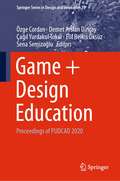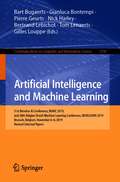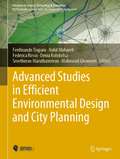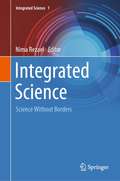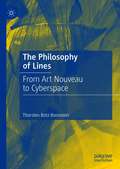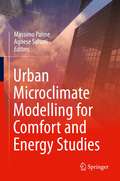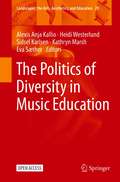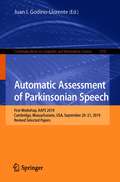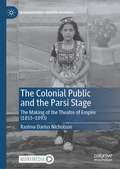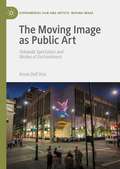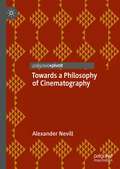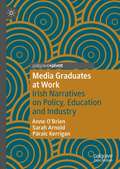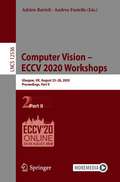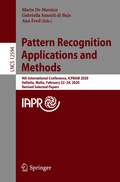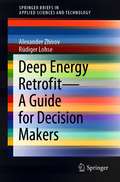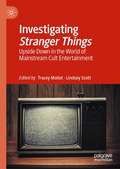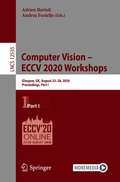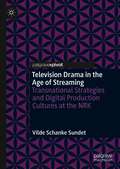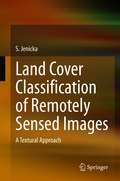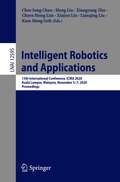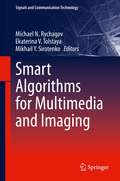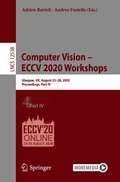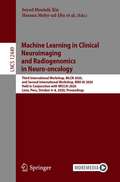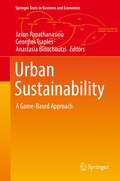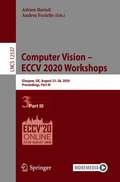- Table View
- List View
Game + Design Education: Proceedings of PUDCAD 2020 (Springer Series in Design and Innovation #13)
by Özge Cordan Demet Arslan Dinçay Çağıl Yurdakul Toker Elif Belkıs Öksüz Sena SemizoğluThis book gathers the papers of the PUDCAD Universal Design Practice Conference: Game + Design Education, organized by Istanbul Technical University and held online on June 24-26, 2020. The conference represented one of the key events of the Practicing Universal Design Principles in Design Education through a CAD-Based Game (PUDCAD) project, which developed a design game on a CAD-based platform, enabling students and designers to learn about universal design principles and develop accessible and innovative design ideas. As such, the PUDCAD project met one of the foremost goals of the European Commission, making sure the inclusion and efficient accessibility for people with disabilities into everyday life. The main topics of the conference include: universal design and education, universal design and user experience, game and design studies, gamification, virtual reality experiment, e-learning in design, and playful spaces and interfaces. The contributions, which were selected by means of a rigorous international peer-review process, highlight numerous exciting ideas that will spur novel research directions and foster multidisciplinary collaboration among different specialists.
Artificial Intelligence and Machine Learning: 31st Benelux AI Conference, BNAIC 2019, and 28th Belgian-Dutch Machine Learning Conference, BENELEARN 2019, Brussels, Belgium, November 6-8, 2019, Revised Selected Papers (Communications in Computer and Information Science #1196)
by Bart Bogaerts Gianluca Bontempi Pierre Geurts Nick Harley Bertrand Lebichot Tom Lenaerts Gilles LouppeThis book contains a selection of the best papers of the 31st Benelux Conference on Artificial Intelligence, BNAIC 2019, and 28th Belgian Dutch Machine Learning Conference, BENELEARN 2019, held in Brussels, Belgium in November 2019. The 11 papers presented in this volume were carefully reviewed and selected from 50 regular submissions. They address various aspects of artificial intelligence such as natural language processing, agent technology, game theory, problem solving, machine learning, human-agent interaction, AI and education, and data analysis.
Advanced Studies in Efficient Environmental Design and City Planning (Advances in Science, Technology & Innovation)
by Ferdinando Trapani Nabil Mohareb Federica Rosso Denia Kolokotsa Sreetheran Maruthaveeran Mahmoud GhoneemThis book explains how learning from past mistakes in urban design can help to enhance sustainable cities and how the principles of Green Urbanism can yield more resilient urban settlements. Environmental design is a fundamental principle in shaping cities. However, environmental challenges like increased resource consumption, water degradation and waste-related issues are among the greatest problems now facing humanity – which is why these issues need to be considered with regard to “smart cities,” either for the development of new urban centers or for the transformation of existing cities. The book not only discusses the importance of integrating sustainability principles in the urban design process, but also demonstrates their application to the development of sustainable cities. As such, the book offers essential information and a source of inspiration for all those who want to build more sustainable cities.
Integrated Science: Science Without Borders (Integrated Science #1)
by Nima RezaeiIntegrated Science: Science without Borders” is the first volume of the INTEGRATED SCIENCE Book series, aiming to publish the results of the most updated ideas and reviews in transdisciplinary fields and to highlight the integration of discrete disciplines, including formal sciences, physical-chemical sciences and engineering, biological sciences, medical sciences, and social sciences. This volume primarily focuses on the research involving the integration of two or more academic fields offering an innovative, borderless view, which is one of the main focuses of the Universal Scientific Education and Research Network (USERN).The whole world is suffering from complex problems; these are borderless problems; thus, a borderless solution could merely solve such complex issues. Transdisciplinarity is a domain, that researchers work jointly, using a shared conceptual framework, drawing together disciplinary-specific theories, concepts, and approaches to address common problems. Lack of confidence, lack of expertise, complexities of healthcare, the confusing nature of healthcare environments, and lack of organization and standardization are the obstacles of successful scientific communication. Consequently, this book provides an overview of the essential elements of transdisciplinary studies and integrated science. The unique aspect of this book -privileging it from other books- is covering all aspects of science as harmonies of a single symphony.
The Philosophy of Lines: From Art Nouveau to Cyberspace
by Thorsten Botz-BornsteinThis book offers a philosophical exploration of lines in art and culture, and traces their history from Antiquity onwards. Lines can be physical phenomena, cognitive responses to observed processes, or both at the same time. Based on this assumption, the book describes the “philosophy of lines” in art, architecture, and science. The book compares Western and Eastern traditions. It examines lines in the works of Paul Klee, Wassily Kandinsky, and Henri Michaux, as well as in Chinese and Japanese art and calligraphy. Lines are not merely a matter of aesthetics but also reflect the psychological states of entire cultures. In the nineteenth century, non-Euclidean geometry sparked the phenomenon of the “self-negating line,” which influenced modern art; it also prepared the ground for virtual reality. Straight lines, distorted lines, blurred lines, hot and cold lines, dynamic lines, lines of force, virtual lines, and on and on, lines narrate the development of human civilization.
Urban Microclimate Modelling for Comfort and Energy Studies
by Massimo Palme Agnese SalvatiThis book discusses urban microclimate and heat-related risks in urban areas, brought on by the combination of global climate change effects and local modification of climate determined by extensive urbanization such as the ‘Urban heat island’ phenomenon. This matter is relevant to almost all urbanized areas in the world, where the increase of urban population and air temperature is expected to endanger both the overall health of the population and the energy supply for the functioning of urban systems. The book details the inter-relationship between urban morphology, microclimate and building energy performance and presents a multidisciplinary approach that brings together Urban Climatology, Engineering and Architectural knowledge to support the development of reliable models and tools for research and practice. This book is a useful tool for architects and building energy modelers, urban planners and geographers who need a practical guide to realize basic urban microclimate simulation for use in both academic research and planning practice.
The Politics of Diversity in Music Education (Landscapes: the Arts, Aesthetics, and Education #29)
by Heidi Westerlund Alexis Anja Kallio Sidsel Karlsen Kathryn Marsh Eva SætherThis open access book examines the political structures and processes that frame and produce understandings of diversity in and through music education. Recent surges in nationalist, fundamentalist, protectionist and separatist tendencies highlight the imperative for music education to extend beyond nominal policy agendas or wholly celebratory diversity discourses. Bringing together high-level theorisation of the ways in which music education upholds or unsettles understandings of society and empirical analyses of the complex situations that arise when negotiating diversity in practice, the chapters in this volume explore the politics of inquiry in research; examine music teachers’ navigations of the shifting political landscapes of society and state; extend conceptualisations of diversity in music education beyond familiar boundaries; and critically consider the implications of diversity for music education leadership. Diversity is thus not approached as a label applied to certain individuals or musical repertoires, but as socially organized difference, produced and manifest in various ways as part of everyday relations and interactions. This compelling collection serves as an invitation to ongoing reflexive inquiry; to deliberate the politics of diversity in a fast-changing and pluralist world; and together work towards more informed and ethically sound understandings of how diversity in music education policy, practice, and research is framed and conditioned both locally and globally.
Automatic Assessment of Parkinsonian Speech: First Workshop, AAPS 2019, Cambridge, Massachussets, USA, September 20–21, 2019, Revised Selected Papers (Communications in Computer and Information Science #1295)
by Juan I. Godino-LlorenteThis book constitutes the revised and extended papers of the First Automatic Assessment of Parkinsonian Speech Workshop, AAPS 2019, held in Cambridge, Massachusetts, USA, in September 2019. The 6 full papers were thoroughly reviewed and selected from 15 submissions. They present recent research on the automatic assessment of parkinsonian speech from the point of view of such disciplines as machine learning, speech technology, phonetics, neurology, and speech therapy
The Colonial Public and the Parsi Stage: The Making of the Theatre of Empire (1853-1893) (Transnational Theatre Histories)
by Rashna Darius NicholsonThe Colonial Public and the Parsi Stage is the first comprehensive study of the Parsi theatre, colonial South and Southeast Asia’s most influential cultural phenomenon and the precursor of the Indian cinema industry. By providing extensive, unpublished information on its first actors, audiences, production methods, and plays, this book traces how the theatre—which was one of the first in the Indian subcontinent to adopt European stagecraft—transformed into a pan-Asian entertainment industry in the second half of the nineteenth century. Nicholson sheds light on the motivations that led to the development of the popular, commercial theatre movement in Asia through three areas of investigation: the vernacular public sphere, the emergence of competing visions of nationhood, and the narratological function that women served within a continually shifting socio-political order. The book will be of interest to scholars across several disciplines, including cultural history, gender studies, Victorian studies, the sociology of religion, colonialism, and theatre.
The Moving Image as Public Art: Sidewalk Spectators and Modes of Enchantment (Experimental Film and Artists’ Moving Image)
by Annie Dell'AriaThis book maps the presence of moving images within the field of public art through encounters with passersby. It argues that far from mere distraction or spectacle, moving images can produce moments of enchantment that can renew, intensify, or challenge our everyday engagement with public space and each other. These artworks also offer frameworks for understanding how moving images operate in public space—how they move viewers and reconfigure the site of the screen. Each chapter explores a mode of address that examines how artists and curators leverage the moving image’s attentional power to engage audiences, create spaces, make place, and challenge assumptions. This book also examines the difficulties and compromises that arise when using urban screens for public art.
Towards a Philosophy of Cinematography
by Alexander NevillThis book presents three interrelated essays about cinematography which offer a theoretical understanding of the ways that film practitioners orchestrate light in today’s post-digital context. Cinematography is a practice at the heart of film production which traditionally involves the control of light and camera technologies to creatively capture moving imagery. During recent years, the widespread adoption of digital processes in cinematography has received a good deal of critical attention from practitioners and scholars alike, however little specific consideration about evolving lighting practices can be found amongst this discourse. Drawing on new-materialist ideas, actor-network theory and the concept of co-creativity, these essays examine the impact of changing production processes for the role and responsibilities of a cinematographer with a specific focus on lighting. Each essay advances a new perspective on the discipline, moving from the notion of light as vision to light as material, from technology as a tool to technology as a network, and from cinematography as an industry to cinematography as a collaborative art.
Media Graduates at Work: Irish Narratives on Policy, Education and Industry (Creative Working Lives)
by Anne O'Brien Sarah Arnold Páraic KerriganThis book systematically examines various factors that shape graduates’ entry into media work, which include the state and its policies, industrial and organizational practices and cultures, and media education. However, the book does not take a typical political economic or even media industries approach to this exploration. Rather, it innovatively traces how these forces are operationalized to shape media work from the perspective of the graduates, their educators and their employers. These varying perspectives are analyzed to see how graduates experience the outcomes of policy, education and industry cultures. The book examines the impact that policy, education and industry have in redefining what media work means for parts of industry that are responsible for cultivating new entrants into the creative industries.
Computer Vision – ECCV 2020 Workshops: Glasgow, UK, August 23–28, 2020, Proceedings, Part II (Lecture Notes in Computer Science #12536)
by Adrien Bartoli Andrea FusielloThe 6-volume set, comprising the LNCS books 12535 until 12540, constitutes the refereed proceedings of 28 out of the 45 workshops held at the 16th European Conference on Computer Vision, ECCV 2020. The conference was planned to take place in Glasgow, UK, during August 23-28, 2020, but changed to a virtual format due to the COVID-19 pandemic.The 249 full papers, 18 short papers, and 21 further contributions included in the workshop proceedings were carefully reviewed and selected from a total of 467 submissions. The papers deal with diverse computer vision topics. Part II focusses on commands for autonomous vehicles; computer vision for ART analysis; sign language recognition, translation and production; visual inductive priors for data-efficient deep learning; 3D poses in the wild challenge; map-based localization for autonomous driving; recovering 6D object pose; and shape recovery from partial textured 3D scans.
Pattern Recognition Applications and Methods: 9th International Conference, ICPRAM 2020, Valletta, Malta, February 22–24, 2020, Revised Selected Papers (Lecture Notes in Computer Science #12594)
by Maria De Marsico Gabriella Sanniti di Baja Ana FredThis book contains revised and extended versions of selected papers from the 9th International Conference on Pattern Recognition, ICPRAM 2020, held in Valletta, Malta, in February 2020. The 7 full papers presented were carefully reviewed and selected from 102 initial submissions. The papers describe applications of pattern recognition techniques to real-world problems, interdisciplinary research, experimental and theoretical studies yielding new insights that advance pattern recognition methods are especially encouraged.
Deep Energy Retrofit—A Guide for Decision Makers (SpringerBriefs in Applied Sciences and Technology)
by Alexander Zhivov Rüdiger LohseMany governments worldwide are setting more stringent targets for reductions in energy use in government/public buildings. Buildings constructed more than 10 years ago account for a major share of energy used by the building stock. However, the funding and “know-how” (applied knowledge) available for owner-directed energy retrofit projects has not kept pace with new requirements. With typical retrofit projects, reduction of energy use varies between 10 and 20%, while actual executed renovation projects show that energy use reduction can exceed 50%, and can cost-effectively achieve the Passive House standard or even approach net zero-energy status (EBC Annex 61 2017a, Hermelink and Müller 2010; NBI 2014; RICS 2013; Shonder and Nasseri 2015; Miller and Higgins 2015; Emmerich et al. 2011).Building energy efficiency (EE) ranks first in approaches with resource efficiency potential with a total resource benefit of approximately $700 billion until 2030. EE is by far the cheapest way to cut CO2 emissions (McKinsey 2011, IPCC 2007). However, according to an IEA study (IEA 2014a), more than 80% of savings potential in building sector remains untapped. Thus, the share of deployed EE in the building sector is lower than in the Industry, Transport, and Energy generation sectors. Estimates for the deep renovation potentials show: €600-900bn investment potential, €1000-1300bn savings potential, 70% energy-saving potential, and 90% CO2 reduction potential.
Investigating Stranger Things: Upside Down in the World of Mainstream Cult Entertainment
by Tracey Mollet Lindsey ScottThis edited collection explores the narrative, genre, nostalgia and fandoms of the phenomenally successful Netflix original series, Stranger Things. The book brings together scholars in the fields of media, humanities, communications and cultural studies to consider the various ways in which the Duffer Brothers’ show both challenges and confirms pre-conceived notions of cult media. Through its three sections on texts, contexts and receptions, the collection examines all aspects of the series’ presence in popular culture, engaging in debates surrounding cult horror, teen drama, fan practices, and contemporary anxieties in the era of Trump. Its chapters seek to address relatively neglected areas of scholarship in the realm of cult media, such as set design, fashion, and the immersive Secret Cinema Experience. These discussions also serve to demonstrate how cult texts are facilitated by the new age of television, where notions of medium specificity are fundamentally transformed and streaming platforms open up shows to extensive analysis in the now mainstream world of cult entertainment.
Computer Vision – ECCV 2020 Workshops: Glasgow, UK, August 23–28, 2020, Proceedings, Part I (Lecture Notes in Computer Science #12535)
by Adrien Bartoli Andrea FusielloThe 6-volume set, comprising the LNCS books 12535 until 12540, constitutes the refereed proceedings of 28 out of the 45 workshops held at the 16th European Conference on Computer Vision, ECCV 2020. The conference was planned to take place in Glasgow, UK, during August 23-28, 2020, but changed to a virtual format due to the COVID-19 pandemic. The 249 full papers, 18 short papers, and 21 further contributions included in the workshop proceedings were carefully reviewed and selected from a total of 467 submissions. The papers deal with diverse computer vision topics. Part I focusses on adversarial robustness in the real world; bioimage computation; egocentric perception, interaction and computing; eye gaze in VR, AR, and in the wild; TASK-CV workshop and VisDA challenge; and bodily expressed emotion understanding.
Television Drama in the Age of Streaming: Transnational Strategies and Digital Production Cultures at the NRK
by Vilde Schanke SundetThis book examines television drama in the age of streaming—a time when television has been reshaped for national and international consumption via both linear ‘flow’ and on-demand user modes. It builds on an in-depth study of the Norwegian public service broadcaster (NRK) and some of its game-changing drama productions (Lilyhammer, SKAM, blank). The book portrays the formative first decade of television streaming (2010-2019), how new streaming services and incumbent television providers intersect and act in a new drama landscape, and how streaming impacts existing television production cultures, publishing models and industry-audience relations. The analysis draws on insight gained through more than a hundred interviews with television experts and fans, hundreds of hours of observations, and unique access to industry conferences, meetings, working documents, and ratings. The book combines perspectives from production studies, media industry studies, and fan studies to inform its analysis.
Land Cover Classification of Remotely Sensed Images: A Textural Approach
by S. JenickaThe book introduces two domains namely Remote Sensing and Digital Image Processing. It discusses remote sensing, texture, classifiers, and procedures for performing the texture-based segmentation and land cover classification. The first chapter discusses the important terminologies in remote sensing, basics of land cover classification, types of remotely sensed images and their characteristics. The second chapter introduces the texture and a detailed literature survey citing papers related to texture analysis and image processing. The third chapter describes basic texture models for gray level images and multivariate texture models for color or remotely sensed images with relevant Matlab source codes. The fourth chapter focuses on texture-based classification and texture-based segmentation. The Matlab source codes for performing supervised texture based segmentation using basic texture models and minimum distance classifier are listed. The fifth chapter describes supervised and unsupervised classifiers. The experimental results obtained using a basic texture model (Uniform Local Binary Pattern) with the classifiers described earlier are discussed through the relevant Matlab source codes. The sixth chapter describes land cover classification procedure using multivariate (statistical and spectral) texture models and minimum distance classifier with Matlab source codes. A few performance metrics are also explained. The seventh chapter explains how texture based segmentation and land cover classification are performed using the hidden Markov model with relevant Matlab source codes. The eighth chapter gives an overview of spatial data analysis and other existing land cover classification methods. The ninth chapter addresses the research issues and challenges associated with land cover classification using textural approaches. This book is useful for undergraduates in Computer Science and Civil Engineering and postgraduates who plan to do research or project work in digital image processing. The book can serve as a guide to those who narrow down their research to processing remotely sensed images. It addresses a wide range of texture models and classifiers. The book not only guides but aids the reader in implementing the concepts through the Matlab source codes listed. In short, the book will be a valuable resource for growing academicians to gain expertise in their area of specialization and students who aim at gaining in-depth knowledge through practical implementations. The exercises given under texture based segmentation (excluding land cover classification exercises) can serve as lab exercises for the undergraduate students who learn texture based image processing.
Intelligent Robotics and Applications: 13th International Conference, ICIRA 2020, Kuala Lumpur, Malaysia, November 5–7, 2020, Proceedings (Lecture Notes in Computer Science #12595)
by Chee Seng Chan Hong Liu Xiangyang Zhu Chern Hong Lim Xinjun Liu Lianqing Liu Kam Meng GohThis book constitutes the proceedings of the 13th International Conference on Intelligent Robotics and Applications, ICIRA 2020, held in Kuala Lumpur, Malaysia, in November 2020. The 45 full papers and 3 short papers were carefully reviewed and selected from 66 submissions. The accepted papers were grouped into various subtopics including Advanced Measurement and Machine Vision System; Automation; Human-Robot Interaction; Mobile Robots and Intelligent Autonomous System; Recent Trends in Computational Intelligence; Robot Design, and Development and Control.Due to the Corona pandemic ICIRA 2020 was held as a virtual event.
Smart Algorithms for Multimedia and Imaging (Signals and Communication Technology)
by Michael N. Rychagov Ekaterina V. Tolstaya Mikhail Y. SirotenkoThis book presents prospective, industrially proven methods and software solutions for storing, processing, and viewing multimedia content on digital cameras, camcorders, TV, and mobile devices. Most of the algorithms described here are implemented as systems on chip firmware or as software products and have low computational complexity and memory consumption. In the four parts of the book, which contains a total of 16 chapters, the authors address solutions for the conversion of images and videos by super-resolution, depth estimation and control and mono-to-stereo (2D to 3D) conversion; display applications by video editing; the real-time detection of sport episodes; and the generation and reproduction of natural effects. The practical principles of machine learning are illustrated using technologies such as image classification as a service, mobile user profiling, and automatic view planning with dictionary-based compressed sensing in magnetic resonance imaging. The implementation of these technologies in mobile devices is discussed in relation to algorithms using a depth camera based on a colour-coded aperture, the animated graphical abstract of an image, a motion photo, and approaches and methods for iris recognition on mobile platforms. The book reflects the authors’ practical experience in the development of algorithms for industrial R&D and the commercialization of technologies.Explains digital techniques for digital cameras, camcorders, TV, mobile devices;Offers essential algorithms for the processing pipeline in multimedia devices and accompanying software tools;Features advanced topics on data processing, addressing current technology challenges.
Computer Vision – ECCV 2020 Workshops: Glasgow, UK, August 23–28, 2020, Proceedings, Part IV (Lecture Notes in Computer Science #12538)
by Adrien Bartoli Andrea FusielloThe 6-volume set, comprising the LNCS books 12535 until 12540, constitutes the refereed proceedings of 28 out of the 45 workshops held at the 16th European Conference on Computer Vision, ECCV 2020. The conference was planned to take place in Glasgow, UK, during August 23-28, 2020, but changed to a virtual format due to the COVID-19 pandemic.The 249 full papers, 18 short papers, and 21 further contributions included in the workshop proceedings were carefully reviewed and selected from a total of 467 submissions. The papers deal with diverse computer vision topics.Part IV focusses on advances in image manipulation; assistive computer vision and robotics; and computer vision for UAVs.
Machine Learning in Clinical Neuroimaging and Radiogenomics in Neuro-oncology: Third International Workshop, MLCN 2020, and Second International Workshop, RNO-AI 2020, Held in Conjunction with MICCAI 2020, Lima, Peru, October 4–8, 2020, Proceedings (Lecture Notes in Computer Science #12449)
by Seyed Mostafa Kia Hassan Mohy-ud-Din Ahmed Abdulkadir Cher Bass Mohamad Habes Jane Maryam Rondina Chantal Tax Hongzhi Wang Thomas Wolfers Saima Rathore Madhura IngalhalikarThis book constitutes the refereed proceedings of the Third International Workshop on Machine Learning in Clinical Neuroimaging, MLCN 2020, and the Second International Workshop on Radiogenomics in Neuro-oncology, RNO-AI 2020, held in conjunction with MICCAI 2020, in Lima, Peru, in October 2020.*For MLCN 2020, 18 papers out of 28 submissions were accepted for publication. The accepted papers present novel contributions in both developing new machine learning methods and applications of existing methods to solve challenging problems in clinical neuroimaging. For RNO-AI 2020, all 8 submissions were accepted for publication. They focus on addressing the problems of applying machine learning to large and multi-site clinical neuroimaging datasets. The workshop aimed to bring together experts in both machine learning and clinical neuroimaging to discuss and hopefully bridge the existing challenges of applied machine learning in clinical neuroscience. *The workshops were held virtually due to the COVID-19 pandemic.
Urban Sustainability: A Game-Based Approach (Springer Texts in Business and Economics)
by Jason Papathanasiou Georgios Tsaples Anastasia BlouchoutziThis textbook provides an innovative pedagogy to students who will be the policy makers of tomorrow. It provides thoughts on sustainability and the complexity among its different dimensions. It guides students through experience, processes of complex decision making, and sharpen their clarity of thought, to enhance their communication abilities and help them develop critical thinking. It provides key competencies to address the complexities of sustainable development.By combining game-based learning with an analytical style of education, supplemental materials are provided to make the definitions of various sustainability aspects more concrete and allows students to experiment in a consequence-free environment, with scenario examples. Board Game and a hypothetical management course, dealing with various topics like transportation sustainability, societal metabolism, etc. as well as with decision making under those contexts, will formalize the mathematics needed to make robust decisions.
Computer Vision – ECCV 2020 Workshops: Glasgow, UK, August 23–28, 2020, Proceedings, Part III (Lecture Notes in Computer Science #12537)
by Adrien Bartoli Andrea FusielloThe 6-volume set, comprising the LNCS books 12535 until 12540, constitutes the refereed proceedings of 28 out of the 45 workshops held at the 16th European Conference on Computer Vision, ECCV 2020. The conference was planned to take place in Glasgow, UK, during August 23-28, 2020, but changed to a virtual format due to the COVID-19 pandemic.The 249 full papers, 18 short papers, and 21 further contributions included in the workshop proceedings were carefully reviewed and selected from a total of 467 submissions. The papers deal with diverse computer vision topics.Part III includes the Advances in Image Manipulation Workshop and Challenges.
